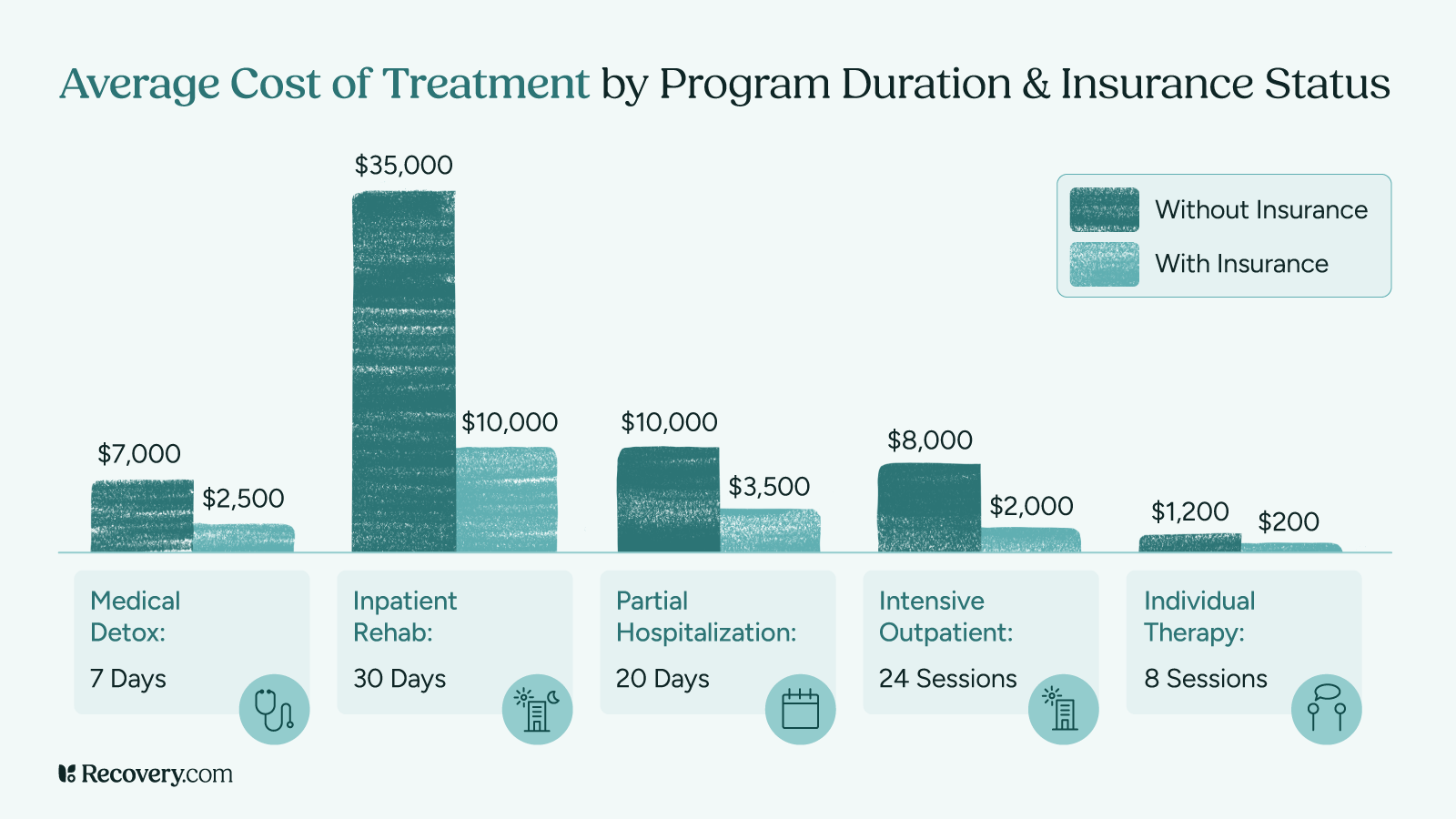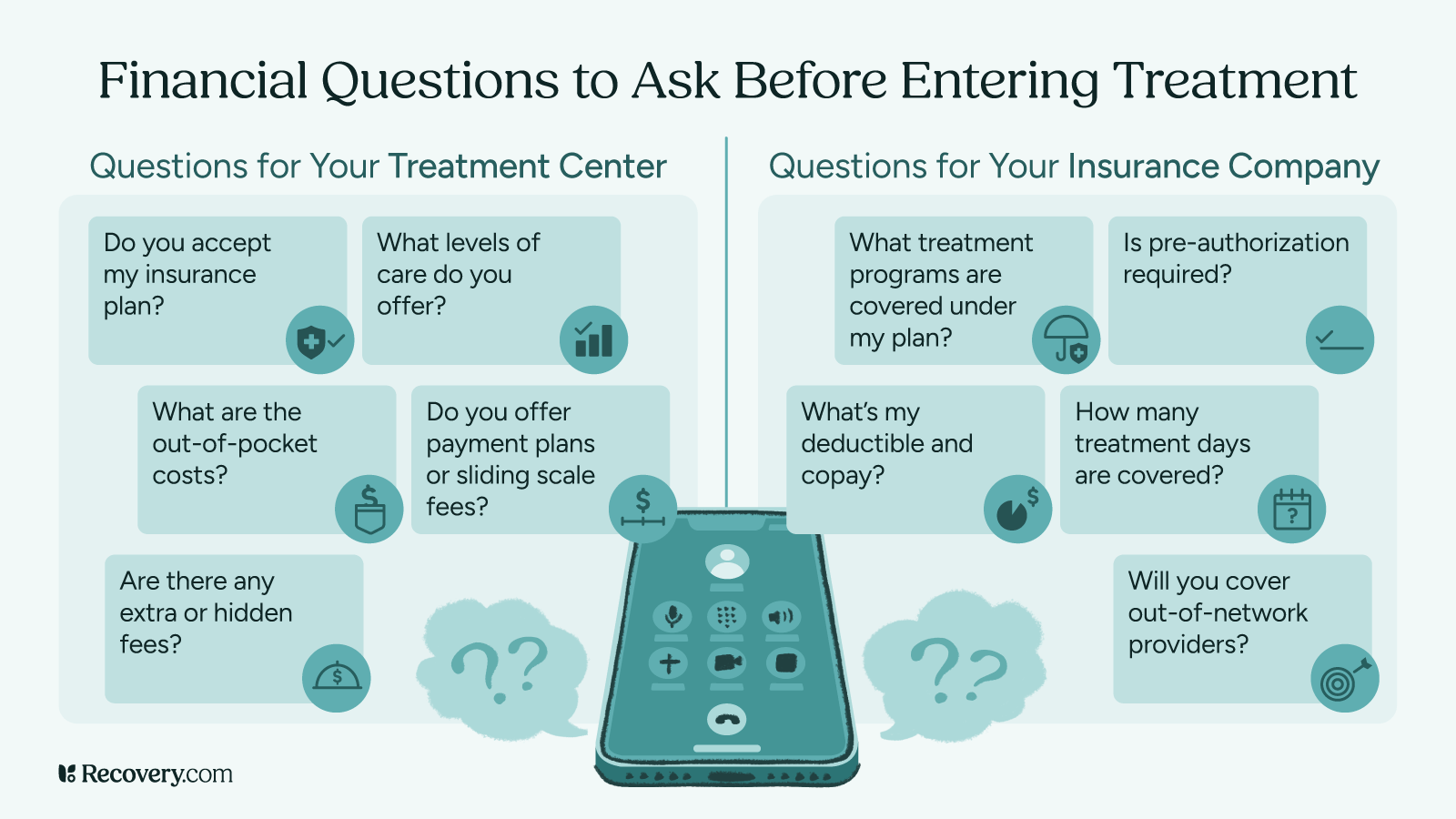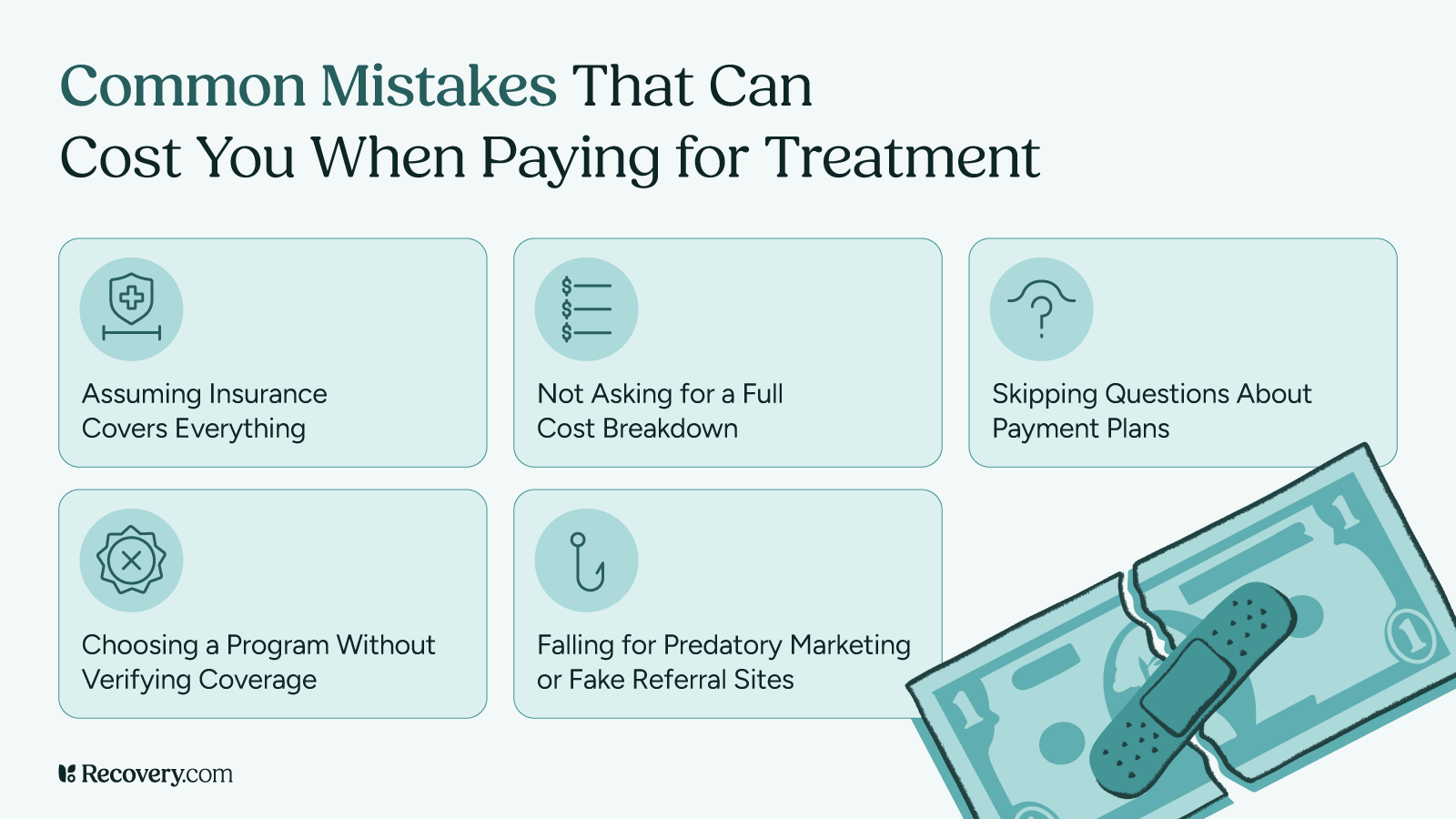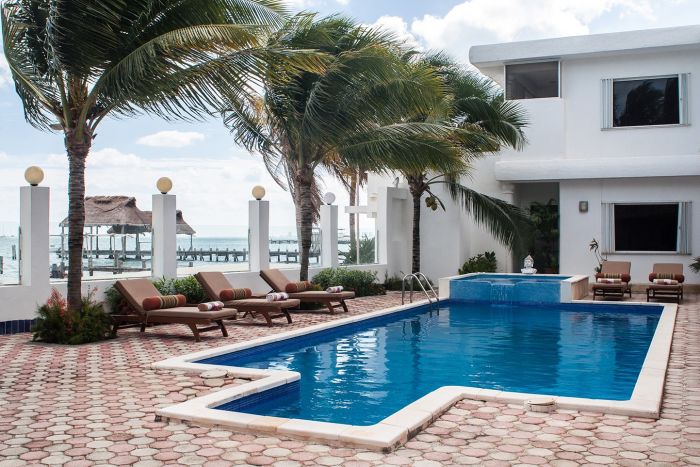Cost shouldn’t stand between you and the mental health or addiction treatment you need. While treatment programs can be expensive, there are ways to make care more affordable.
These are some of the most common ways people pay for treatment. We’ll help you understand what to expect, what questions to ask, and how to find the financial support that works for your situation. If you’re ready to start your recovery process, you may have more options than you think to help cover the costs.

1. Use Your Insurance Benefits
Most health insurance plans in the U.S. do cover mental health and addiction treatment.1 Since the Affordable Care Act (ACA) was passed, insurance companies are required to treat mental health services the same way they treat medical services. This means your coverage for therapy, rehab, or other treatment can’t be more restrictive than coverage for things like surgery or hospital stays.
However, insurance companies decide what they think is “medically necessary,”2 which means they might say no to treatment even when your doctor recommends it. Your insurance may cover some or all of your treatment costs; eligibility depends on your plan and whether they approve your care.
Most private rehab centers accept insurance and offer multiple payment options to help make treatment accessible. Some facilities also accept Medicare or Medicaid, though coverage can vary by state and provider.
How to Verify Benefits and Understand Behavioral Health Coverage
Before starting treatment, call your insurance company directly to understand your benefits. A customer service representative can walk you through your coverage details and help you understand what you’ll pay out of pocket.
Here are the key questions to ask your insurance provider:
- What treatment programs does my policy cover?
- Does my plan cover the full spectrum of care (detox, rehab, and continuing care)?
- How much will I need to pay out of pocket?
- What will my deductible and copayment be?
- How many days of treatment are covered?
- Will my insurance cover prescribed medications?
- Does my plan cover out-of-network treatment centers?
You can also ask your treatment center’s admissions team to help verify your benefits. Many centers have staff who specialize in insurance and can help you understand your coverage before you start treatment.

2. Understand Treatment Costs by Level of Care
The cost of your treatment will also depend on how intensive it is. Here’s what you can expect for detox, inpatient, outpatient, and ongoing therapy:
Medical Detox
Some inpatient rehabs have detox facilities on-site; in other cases, detox is handled at a separate facility. In either case, medical detox is usually an additional cost above and beyond the price of your residential treatment program.
Medical detox costs3 vary widely based on the level of care you need. Standard inpatient detox typically costs $250–$800 per day, while supervised detox with 24/7 medical care runs $500–$650 per day. Outpatient detox costs around $1,000 per day but has lower overall costs since you go home each night.
Keep in mind that these are general ranges. Your actual costs will depend on your insurance coverage, the specific facility you choose, and your individual needs while in treatment.
Inpatient (Residential) Treatment
In the U.S., most 30-day programs at private facilities cost between $25,000 to $50,000 per month, though the prices of residential rehab programs can range from under $10,000 to upwards of $80,000. If you travel to countries with lower costs of living, such as Thailand or India, programs often cost under $15,000 per month.
If you’re considering traveling for treatment, see our article on choosing between local and destination rehabs.
Partial Hospitalization Programs (PHPs)
These programs, which offer more intensive care than outpatient but allow you to go home each night, typically cost $3,500 to upwards of $10,000 at private facilities.
Learn more about the differences between intensive outpatient programs (IOPs) and partial hospitalization programs (PHPs) to find the right level of care for your needs in our guide: IOP vs. PHP: Which Treatment Is Best for You?
Outpatient Programs
Intensive outpatient programs (IOPs) in the U.S. range from $3,500 to over $10,000 depending on the length and number of sessions. Individual therapy with a private practitioner typically costs $65 to $250 per hour.

3. Know How to Access Out-of-Network Providers
Sometimes the treatment program you really want to attend is not in your insurance network. This doesn’t mean you can’t access care there, but it does mean you’ll likely pay more out of pocket.
Options If Your Preferred Provider Isn’t Covered
If your preferred treatment center is out-of-network, you have several options. First, ask your insurance company if they offer any out-of-network benefits. Some plans will still cover a percentage of costs, even at non-network treatment facilities.
You can also ask the treatment center about their self-pay rates or cash pay discounts. Some centers have relationships with financing companies that can help you create affordable payment plans.
Another option is to ask your insurance company about single-case agreements. In some situations, especially when in-network options are limited, insurance companies will agree to cover an out-of-network health care provider at in-network rates.
Find more details in our complete guide to using insurance to pay for inpatient drug rehab.
4. Ask About Payment Plans and Sliding Scales
Treatment centers understand that cost can be a barrier to care. That’s why most facilities offer flexible payment options to help make treatment more affordable.
What to Ask When Money Is Tight
If you’re concerned about costs, be upfront with your rehab’s admissions staff about your financial situation. Often, facilities can work with you to create a payment plan that fits your budget. Ask about:
- Interest-free payment plans that let you spread costs over several months
- Sliding-scale fees based on your income
- Discounts for paying your balance in full upfront
- Work-trade arrangements where you can reduce costs by helping with facility operations
- Scholarships or hardship funds they might have available
Don’t be afraid to negotiate. Treatment centers want to help people get the care they need, and some have flexibility in their pricing. The worst they can say is no, but you might be surprised by what options are available.
5. Apply for Grants, Scholarships, and State Funding
Beyond insurance and payment plans, there are other sources of funding that can help cover treatment costs.
Public Resources and Nonprofit Support
Many states offer funding for addiction and mental health care through grants4 and public programs. Contact your state’s department of health or substance abuse agency to learn about programs in your area. These programs often have income requirements and may have waiting lists, but they can provide significant financial assistance.
Some nonprofit organizations also offer substance use disorder treatment scholarships. These might be available through professional associations, religious organizations, or foundations focused on mental illness and substance use disorders. Search online for “addiction treatment scholarships” or “mental health treatment grants” in your area.
If you’re a veteran, you may qualify for treatment through the VA healthcare system. Students might find resources through their college or university counseling centers, which often provide low-cost or free behavioral health services.
Always be wary of addiction treatment scams and rehab-owned referral sites posing as objective resources when searching for help online. Learn more in our article on how to avoid common addiction treatment center scams.
6. Get Help From an Insurance Advocate or Case Manager
Navigating insurance and treatment costs can be overwhelming, especially when you’re already facing a crisis. But luckily, you don’t have to figure it all out alone.
How Professionals Can Help Reduce Financial Stress
Many treatment centers employ insurance specialists or case managers who can help you understand your benefits and find ways to make treatment affordable. These professionals know the ins and outs of insurance coverage and can advocate on your behalf.
If your insurance claim gets denied, these advocates can help you appeal the decision. You have the right to appeal any denied claim through your insurance company’s internal review process, or through an independent external review if needed.
Some community-based organizations also have independent patient advocates or social workers who specialize in helping people access health care. Your doctor, local health department, or the 211 helpline (dial 2-1-1) can help you find these resources in your area.
Get Started Today
The most important step is to start exploring your options. Call your insurance company, reach out to treatment centers, and ask questions about costs and payment options. Treatment is an investment in your health and future, and there are people and resources available to help make it accessible.
You deserve support. And with the right financial planning, you can access the care you need.














